As schools start opening their doors, students across America are well into the process of renewing all their gear. The usual outfits, notebooks, and backpacks are getting gobbled up in droves, but smartphones tend to fly off the shelves around this time of year too. So to keep the back-to-school spirit going, we’ve rounded up some of our favorite handsets for the scholar.
However, because cash is always precious on campus, we’ve added a twist — each entry here costs $300 unlocked or less. If money isn’t an object, we’d recommend waiting to see what Apple and Samsung have in store in the coming weeks before reaching for that new HTC One (M8) or LG G3. But if you’re conscious of your budget, here are the smartest buys you can snag today.
Motorola Moto G
The Moto G legitimized the recent wave of cheap yet capable Android devices when it was released late last year, and it’s still the king of the budget smartphone mountain. In fact, it’s only gotten better, as the formerly 3G-only handset has since gained 4G LTE capability. And at just $219 unlocked, that 4G model is a stone cold steal.
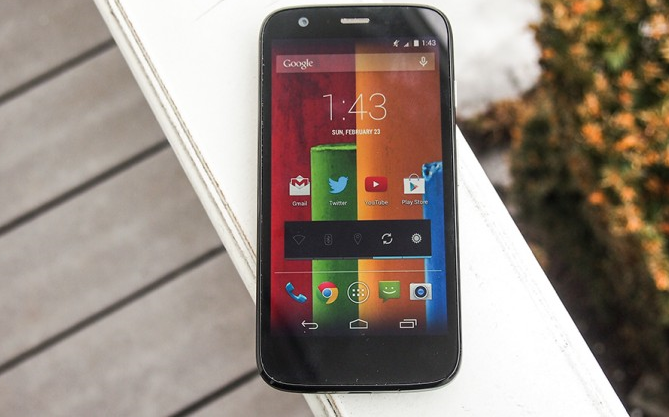
Along with the upgraded network speeds, the 4G Moto G features the latest version of Android KitKat, a comfortable, no-frills design, a vivid 4.5-inch, 720p display, and a more-than-capable quad-core Snapdragon 400 processor with 1 GB of RAM. Its biggest weakness is that only has 8 GB of storage out of the box, but even that is rectified by its included microSD slot. You’re looking for value when you’re in the midrange smartphone market, and nothing does value better than the Moto G.
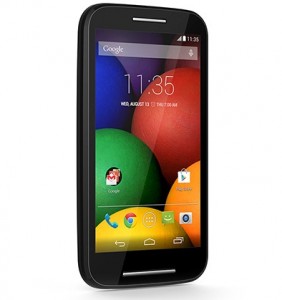 Motorola Moto E
Motorola Moto E
Except, maybe, the G’s little sibling, the Moto E. Priced almost $100 lower than its big brother ($130 unlocked), the Moto E is to lower-end devices what the Moto G is to midrange ones. It’s a comparatively lesser device across the board — it’s a little bit fatter, the smaller display only has a resolution of 960 x 540, and it lacks LTE support — but it still runs well, and it’s the cheapest way into the most recent version of Android. If price is absolutely paramount and you need little more than the bare essentials from your smartphone, the Moto E is a delight.
HTC Desire 816
If you’d like your phone to be a little bit bigger and a little more stylish, we’ll direct your attention to HTC’s midrange flagship, the Desire 816. Currently available for $300 on prepaid carriers like Virgin Mobile, the Desire 816 isn’t going to give you the premium look and feel of the One (M8), but its plasticized take on that design still comes off nicely in the hand.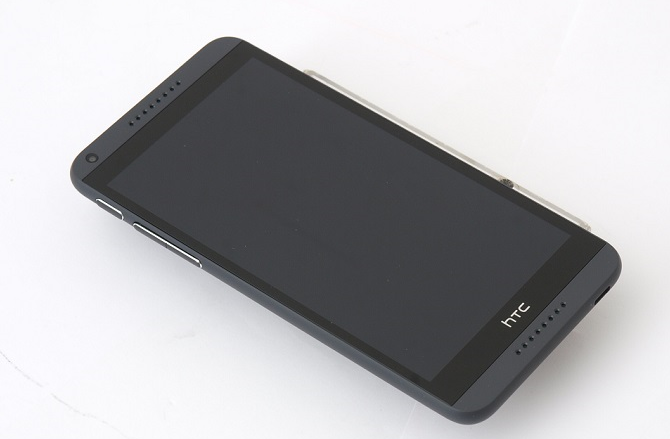
Outside of that, its quad-core Snapdragon chip and 1.5 GB of RAM offer plenty of speed, its 13-megapixel main camera and 5-megapixel front camera would fit on phones twice as expensive, and its BoomSound speakers are top-notch. Its 5.5-inch, 720p display could stand to be sharper, but taken altogether, the Desire 816 is currently as good as it gets for a mid-tier phablet.
Huawei Ascend Mate2
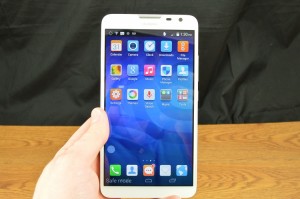 If you want to go even bigger than the Desire 816, though, Huawei’s recently-launched Ascend Mate2 is another phablet worth a look. Retailing for $300 off-contract from Huawei’s online store, the Mate2 (yes, there’s no space there) features a bonkers 6.1-inch, 720p display and a simplified UI that removes most of Android’s menus altogether. Both of those could use some sharpening up, but the Mate2 is more about power anyways — alongside its quad-core Snapdragon 400 processor and 2 GB of RAM, it packs a massive 3900 mAh battery that genuinely lasts for days. If you value performance above all else — and if you own pants with big pockets — the Mate2 is the brick house of the midrange.
If you want to go even bigger than the Desire 816, though, Huawei’s recently-launched Ascend Mate2 is another phablet worth a look. Retailing for $300 off-contract from Huawei’s online store, the Mate2 (yes, there’s no space there) features a bonkers 6.1-inch, 720p display and a simplified UI that removes most of Android’s menus altogether. Both of those could use some sharpening up, but the Mate2 is more about power anyways — alongside its quad-core Snapdragon 400 processor and 2 GB of RAM, it packs a massive 3900 mAh battery that genuinely lasts for days. If you value performance above all else — and if you own pants with big pockets — the Mate2 is the brick house of the midrange.
Nokia Lumia 635
Android devices have dominated this roundup so far, but Windows Phone has made some strides in the lower price tiers of the market too. If you’re a budget buyer who’s tired of the Google/Apple smartphone duopoly, we recommend checking out the Lumia 635, which is available anywhere from $120 to $180 off-contract at AT&T, MetroPCS, and T-Mobile.
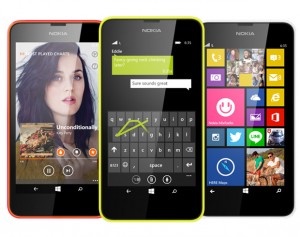 This little guy pairs Nokia’s traditionally sturdy and colorful design with Windows Phone 8.1, making it the most affordable way to get the newest iteration of Microsoft’s mobile OS, Cortana included. It doesn’t offer much in the way of sharpness and strength — as evidenced by its 4.5-inch, 854 x 480 display and 512 MB of RAM — and it puzzlingly lacks a front-facing camera, but its LTE connectivity and easy-to-use UI help it make amends. Windows Phone is noticeably improving with each update, and the Lumia 635 is a great way to get on the wave. Alternatively, if you can make it without LTE, the Lumia 630 offers an otherwise identical package and is now going for just $50 off-contract at Cricket.
This little guy pairs Nokia’s traditionally sturdy and colorful design with Windows Phone 8.1, making it the most affordable way to get the newest iteration of Microsoft’s mobile OS, Cortana included. It doesn’t offer much in the way of sharpness and strength — as evidenced by its 4.5-inch, 854 x 480 display and 512 MB of RAM — and it puzzlingly lacks a front-facing camera, but its LTE connectivity and easy-to-use UI help it make amends. Windows Phone is noticeably improving with each update, and the Lumia 635 is a great way to get on the wave. Alternatively, if you can make it without LTE, the Lumia 630 offers an otherwise identical package and is now going for just $50 off-contract at Cricket.
Apple iPhone 4S
The budget options are infinitely more scarce on Apple’s side of the tracks because, well, Tim Cook and company only make one phone a year (for now, at least). But if it’s iPhone or bust, your only option is the iPhone 4S, which now sells in the $280-300 range on prepaid carriers like Virgin and Boost. You can also grab it for around $150 off-contract if you’re willing to buy a pre-owned device from Verizon or Sprint, but we generally recommend avoiding the inherent risks there. It’s going to be an overpay either way, but such is the premium on anything designed in Cupertino.

The 4S is an old dog at this point, but it’s still holding strong with the latest version of iOS 7 (and more than likely the forthcoming iOS 8), a dependable 8-megapixel camera, and a dual-core A5 processor. Its 3.5-inch display is hilariously tiny by today’s standards, but its 960 x 640 resolution means that it’s still very sharp. And per usual with Apple, the whole thing is built supremely well. If you can wait just a few more weeks for the iPhone 6 to be announced, do so, because the entirely superior iPhone 5 will probably take the 4S’s spot in the market. For now, though, the 4S is still an acceptable choice.
OnePlus One
And now for something completely different. Right up front, you should know that you’re probably not going to get your hands on a OnePlus One anytime soon. The China-based Oppo subsidiary is still giving its first phone away through a strange (and sometimes idiotic) invite system that works more like a viral marketing campaign than a traditional distribution strategy. We can only assume that a full release is coming sometime in the near future, but exact dates are still up in the air.
We decided to throw the One on this list anyway, though, because if you can grab a unit, you’ll have what is undoubtedly the most advanced $300 phone currently available to the public. It’s not even all that close either; the One is a high-end device fooling around in the mid-tier price range. The self-proclaimed “flagship killer” comes with a 5.5-inch, 1080p display, a 2.5 GHz quad-core Snapdragon 801 processor, 3 GB of RAM, up to 64 GB of storage, a 13-megapixel main camera, a 5-megapixel front camera, and a 3100 mAh battery. All of that would be advanced on a $650 device; for $300 off-contract, it’s lunacy.
The only possible concern here is that the One employs CyanogenMod 11S for its UI — that’s more customizable than typical Android and runs over the latest version of KitKat, but it still may skew a little too hardcore for more casual users. Otherwise, we’re looking at a device that, should it see a full retail release, could completely change the look of lists like these come next school year.
The post 7 Smartphones for the Budget-Minded Student appeared first on Brighthand.com.